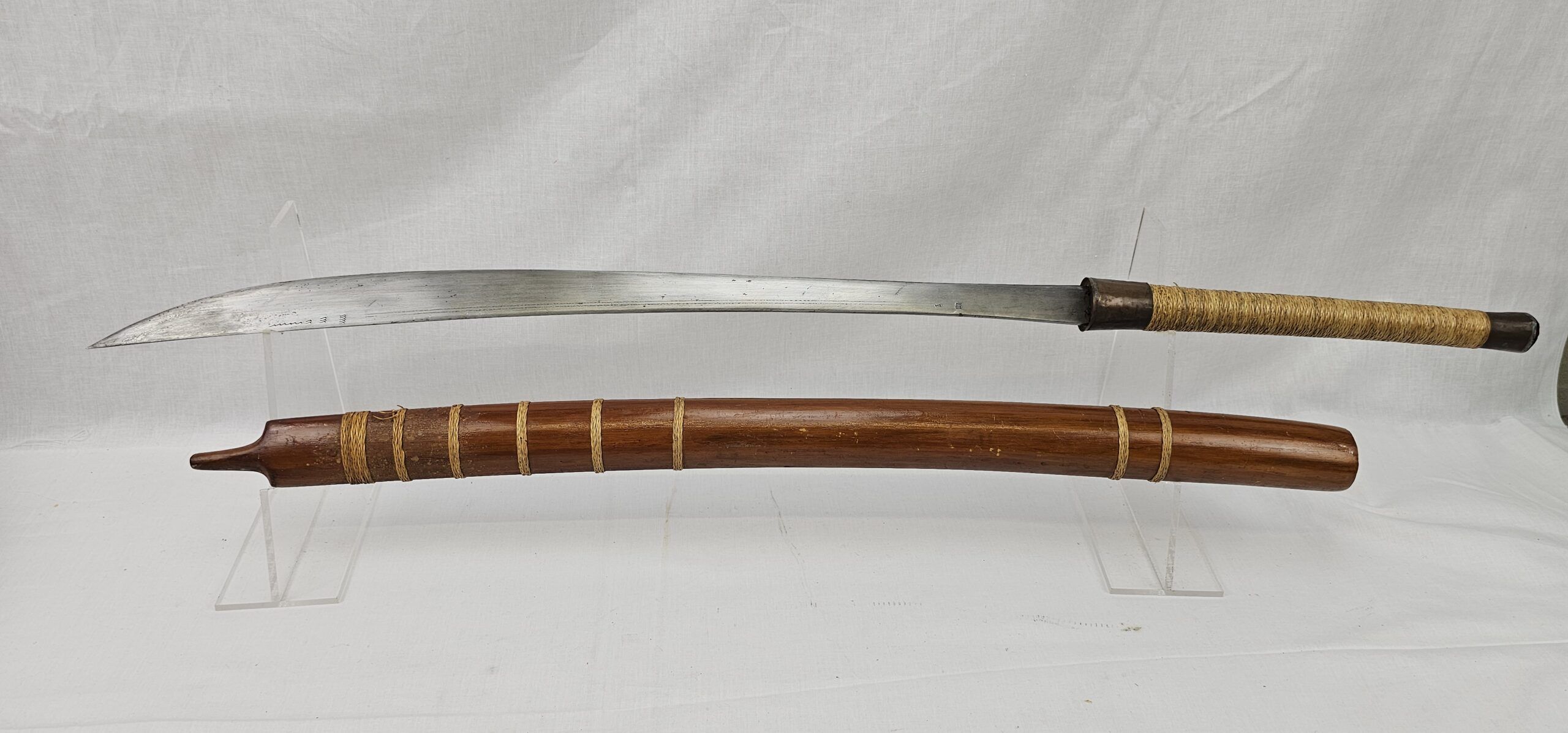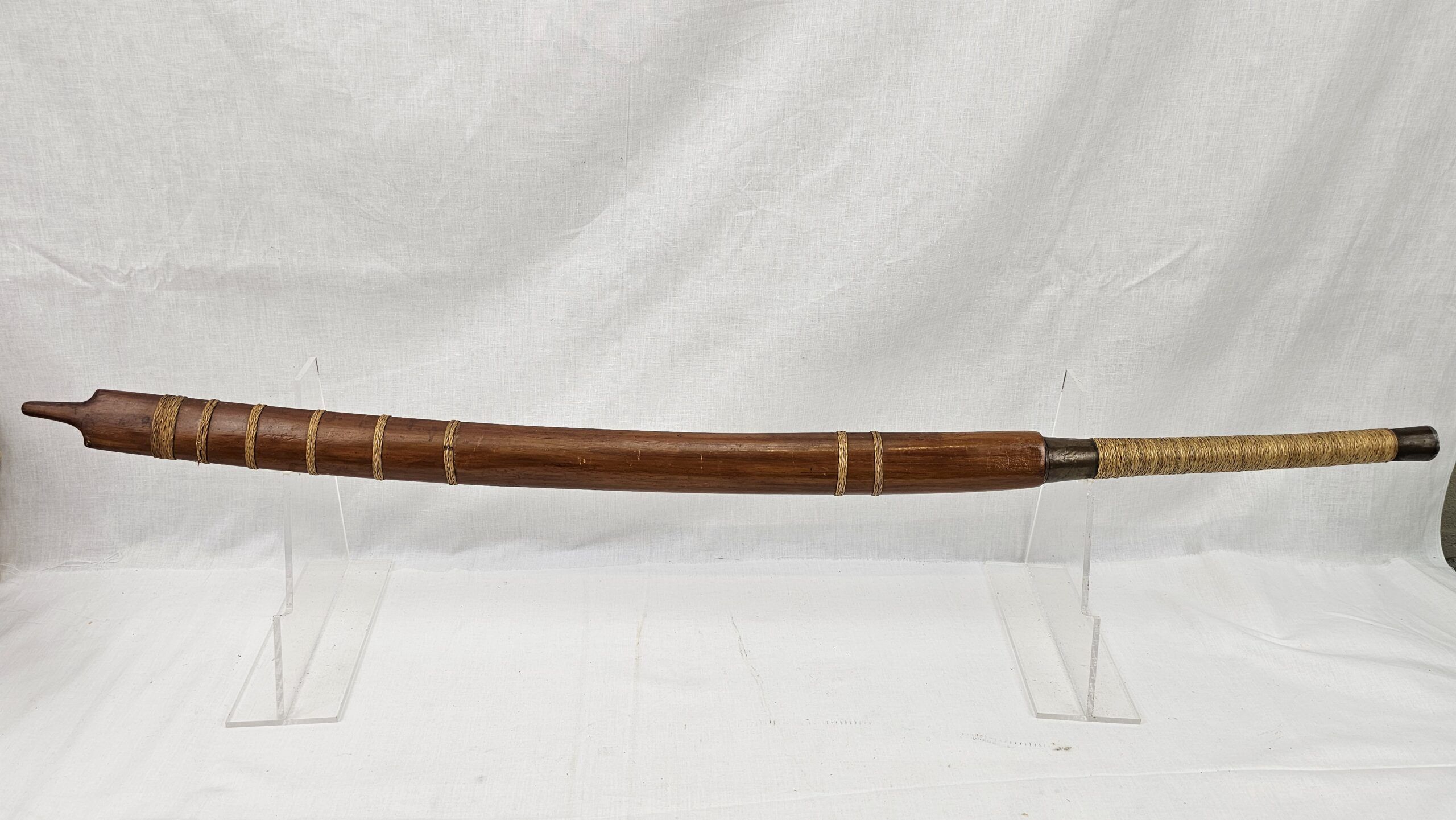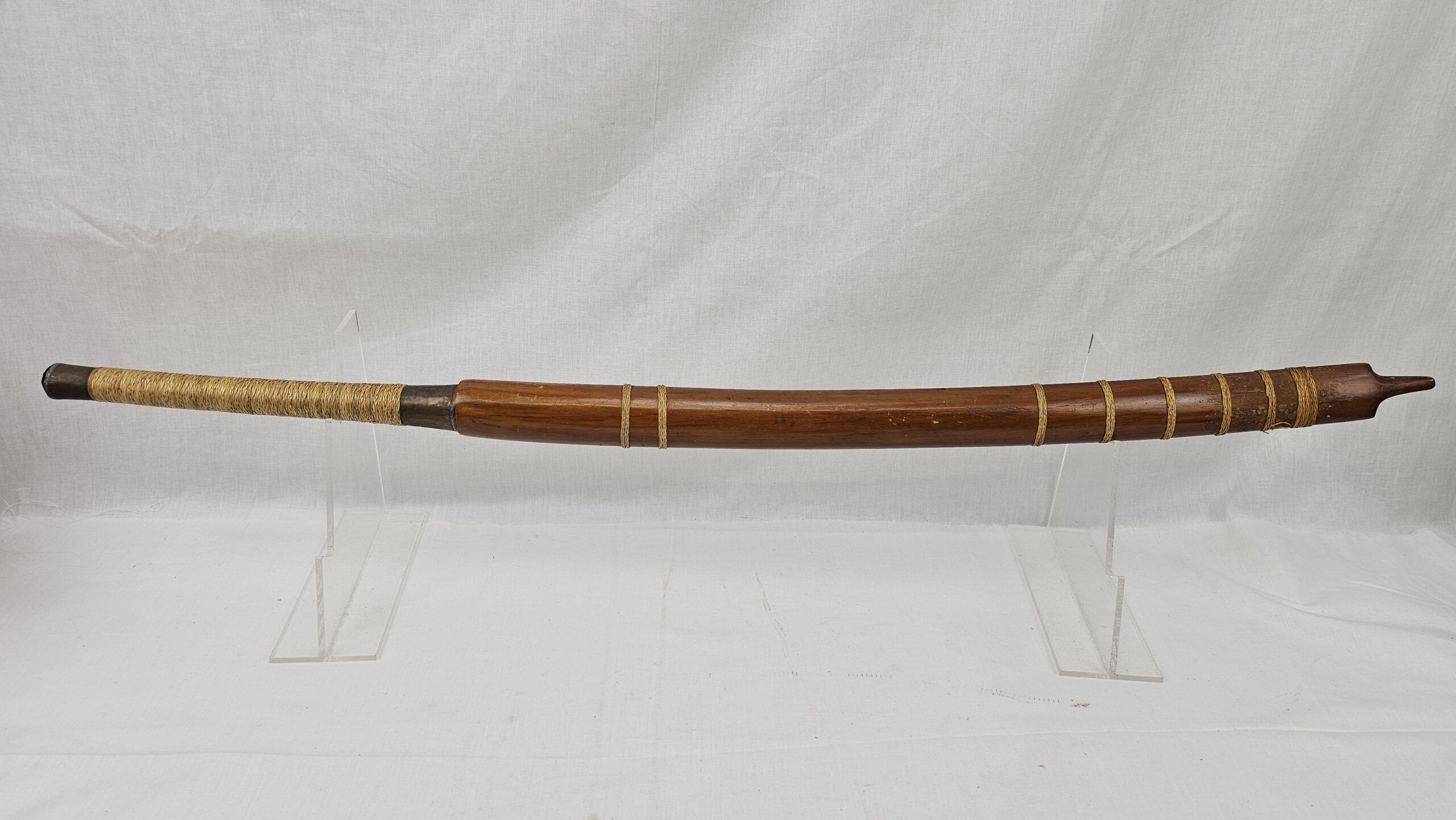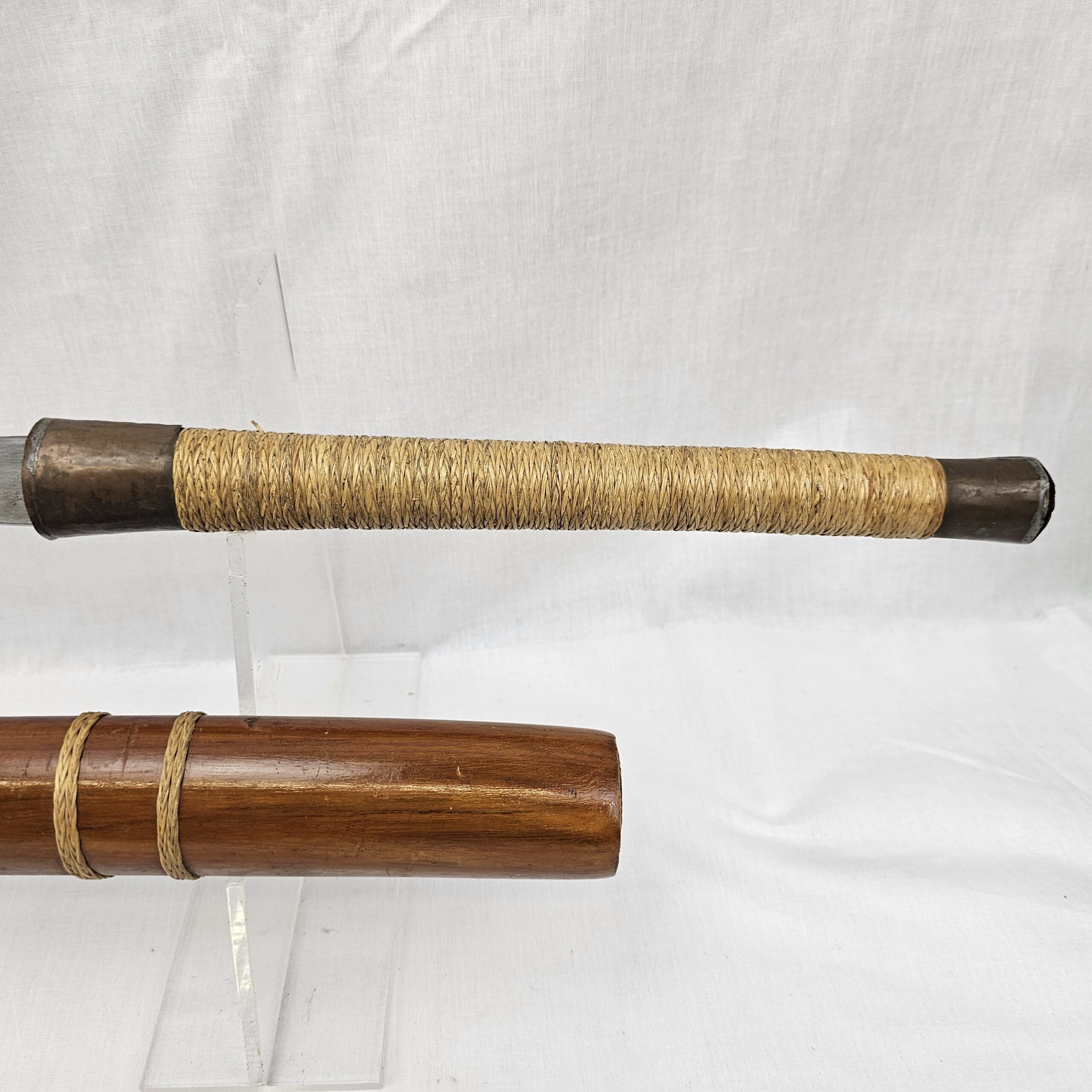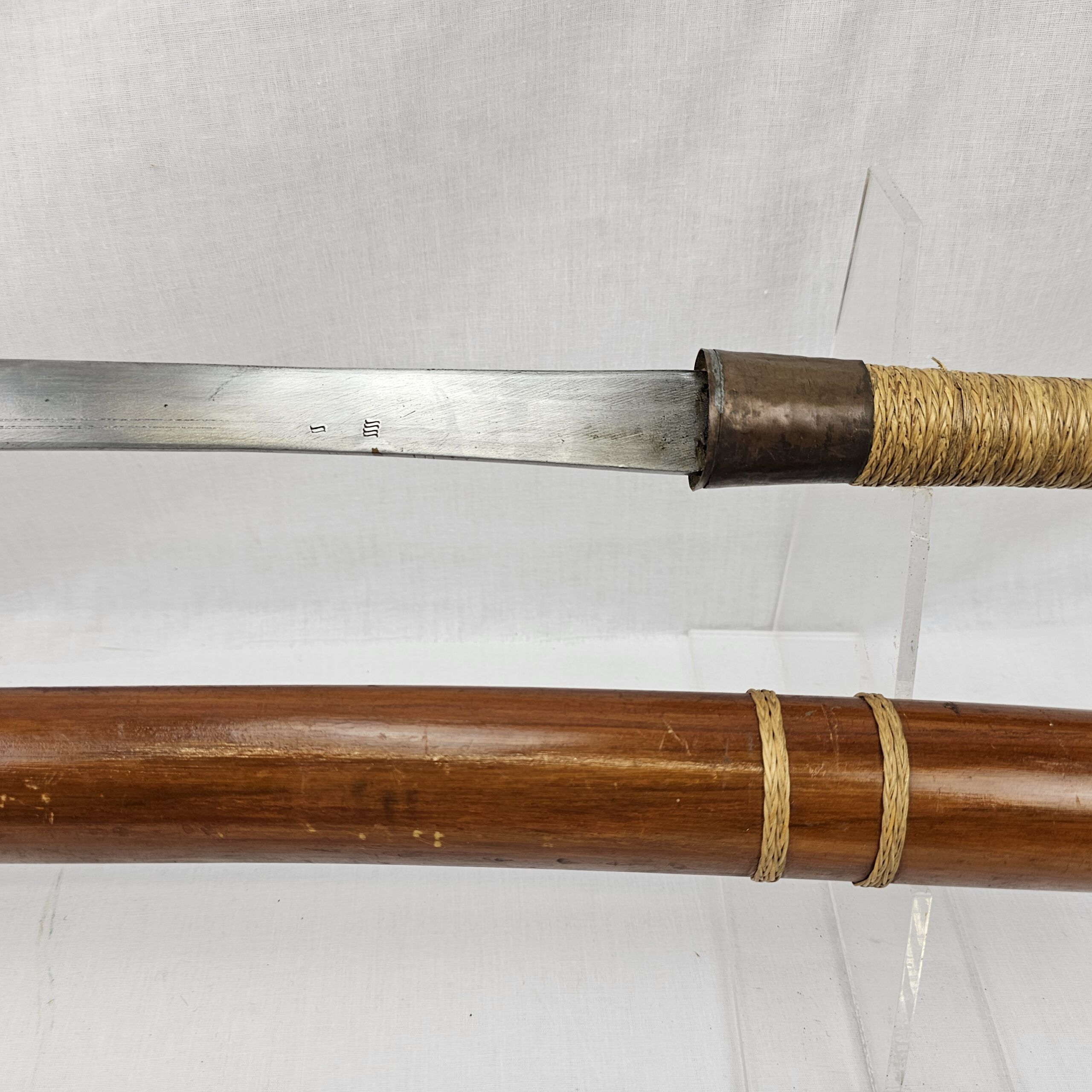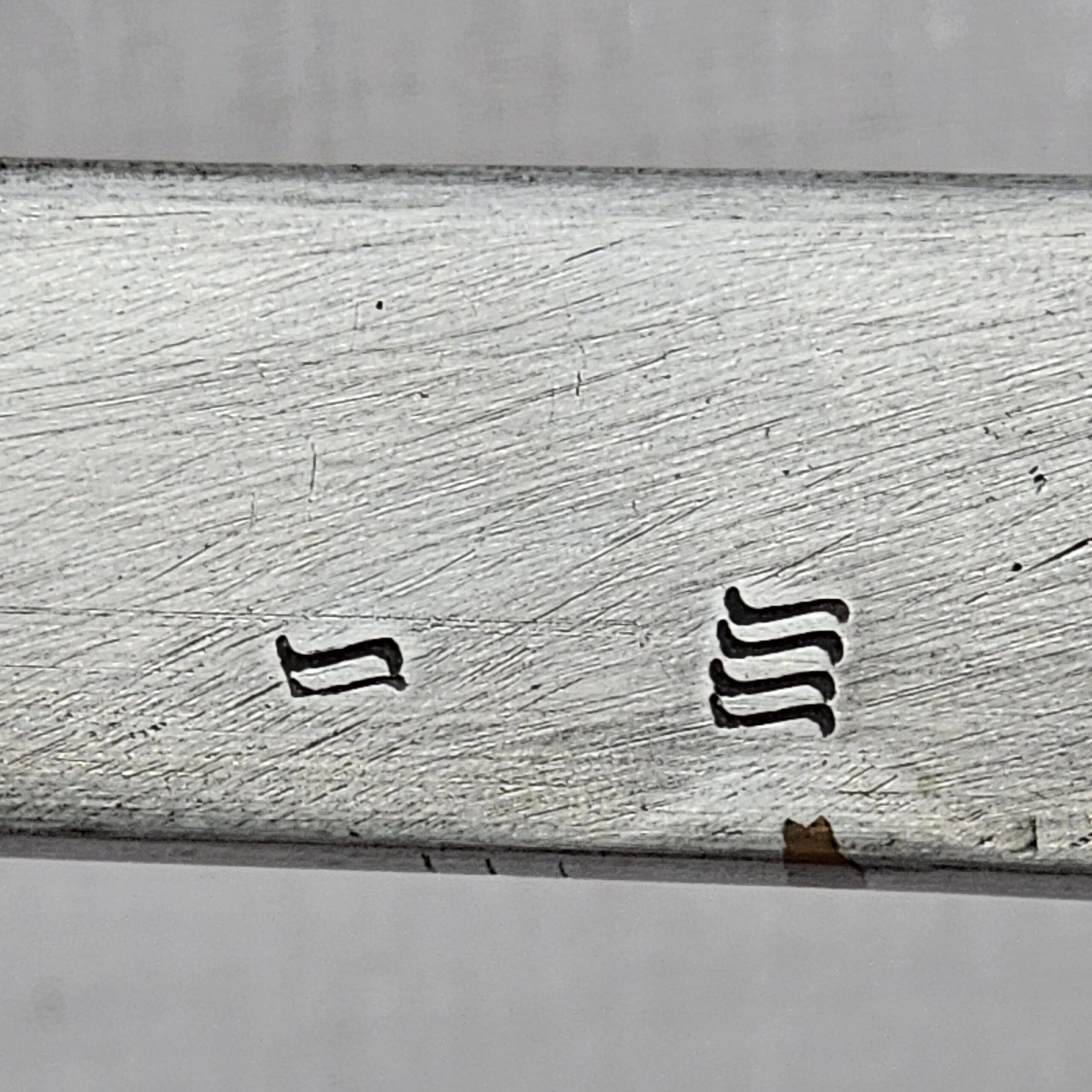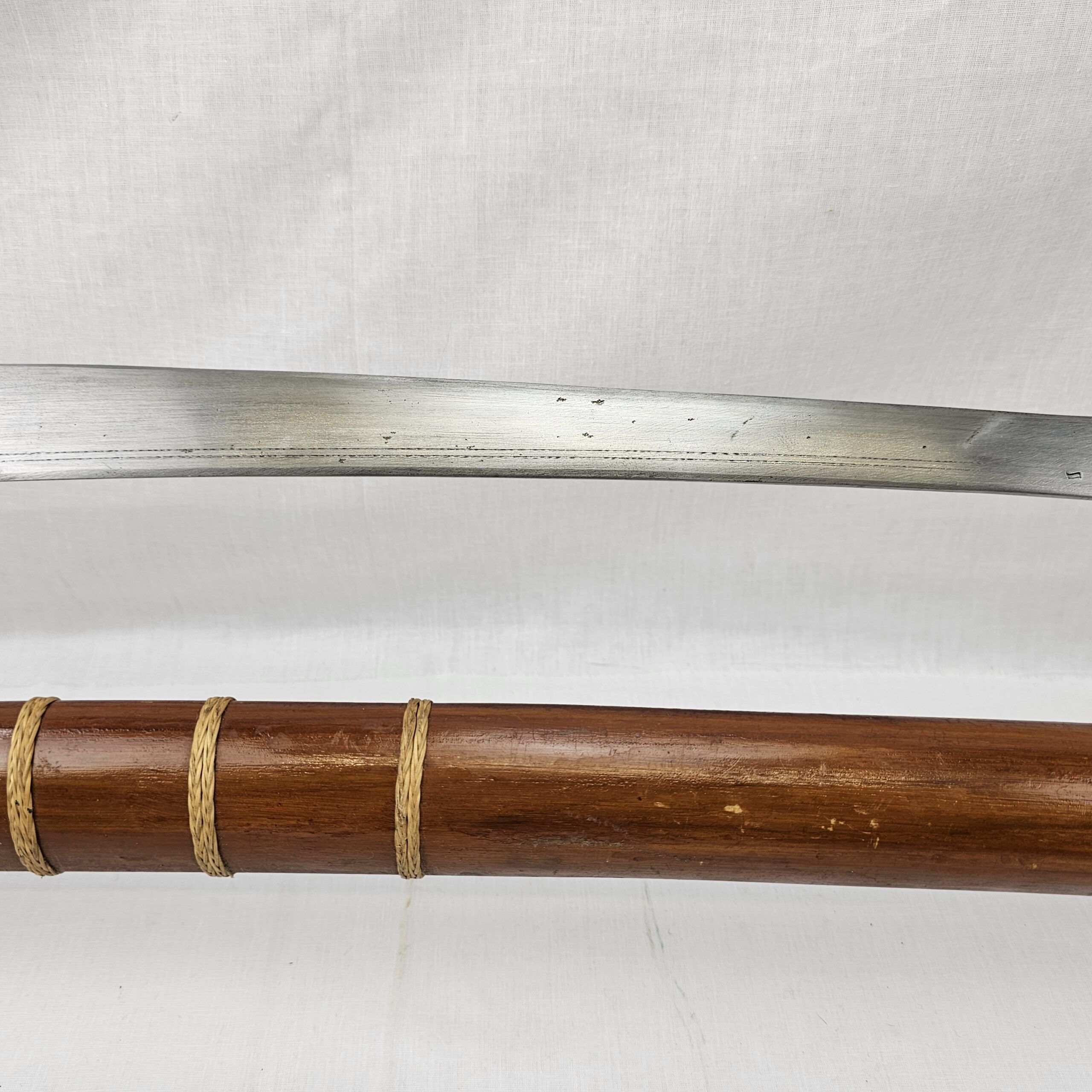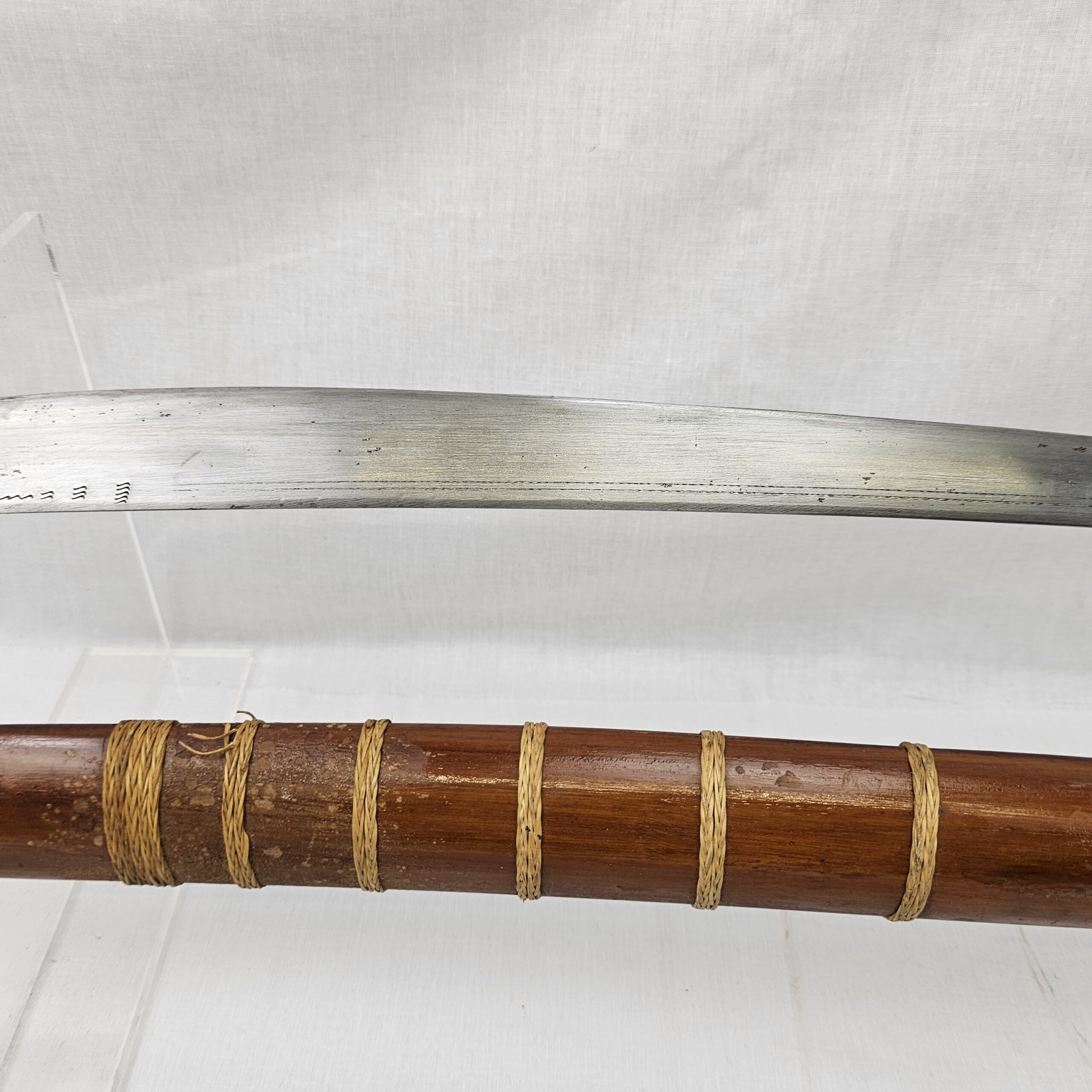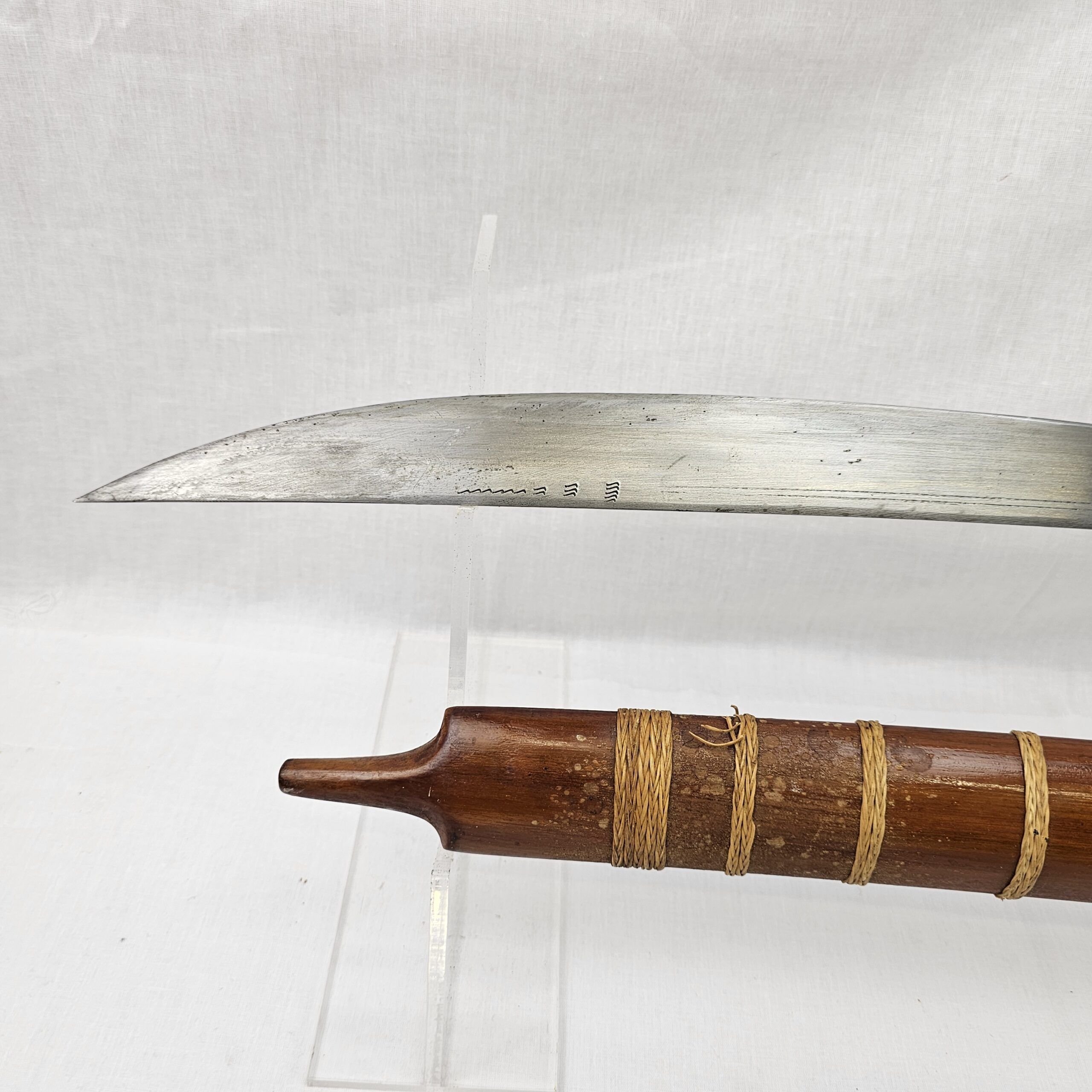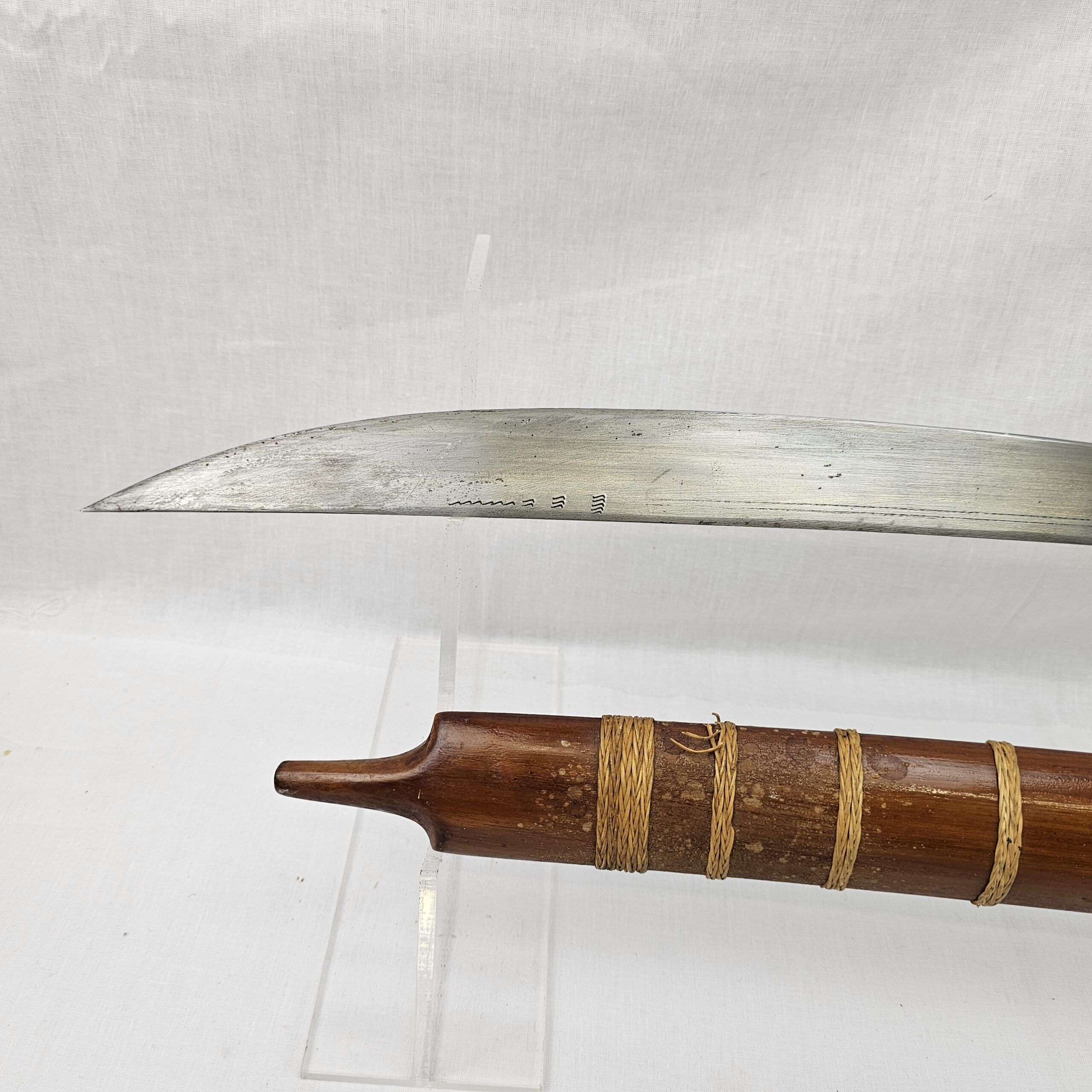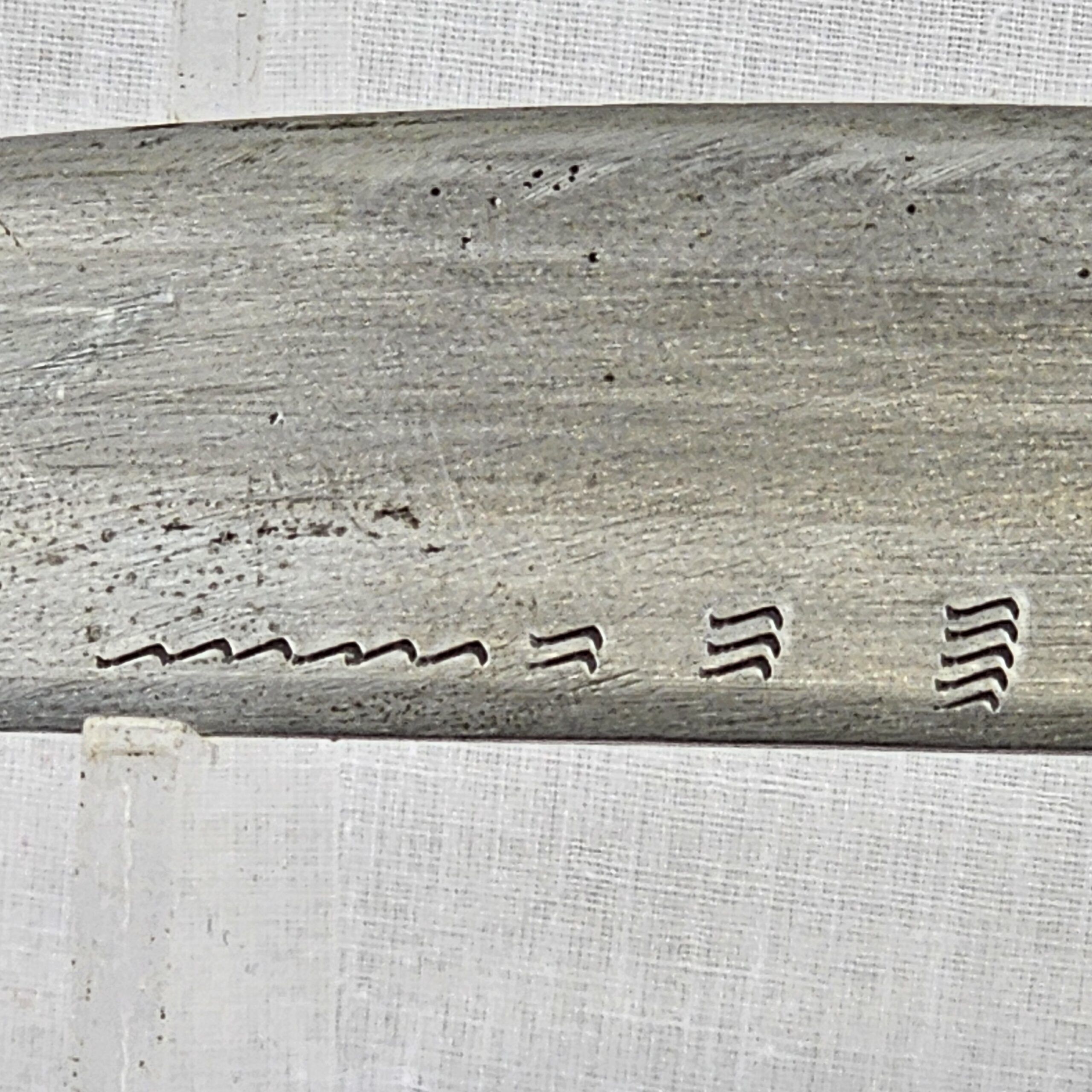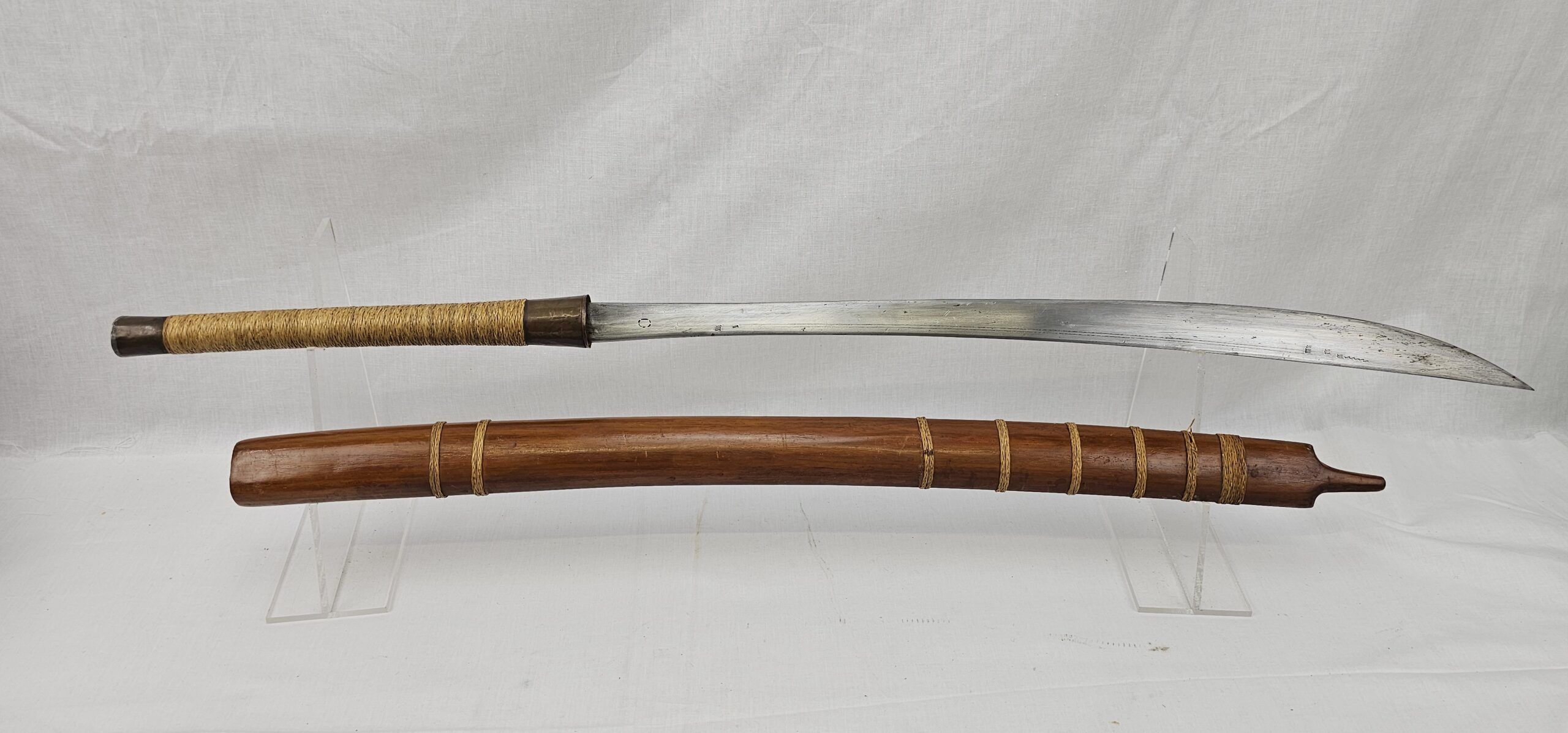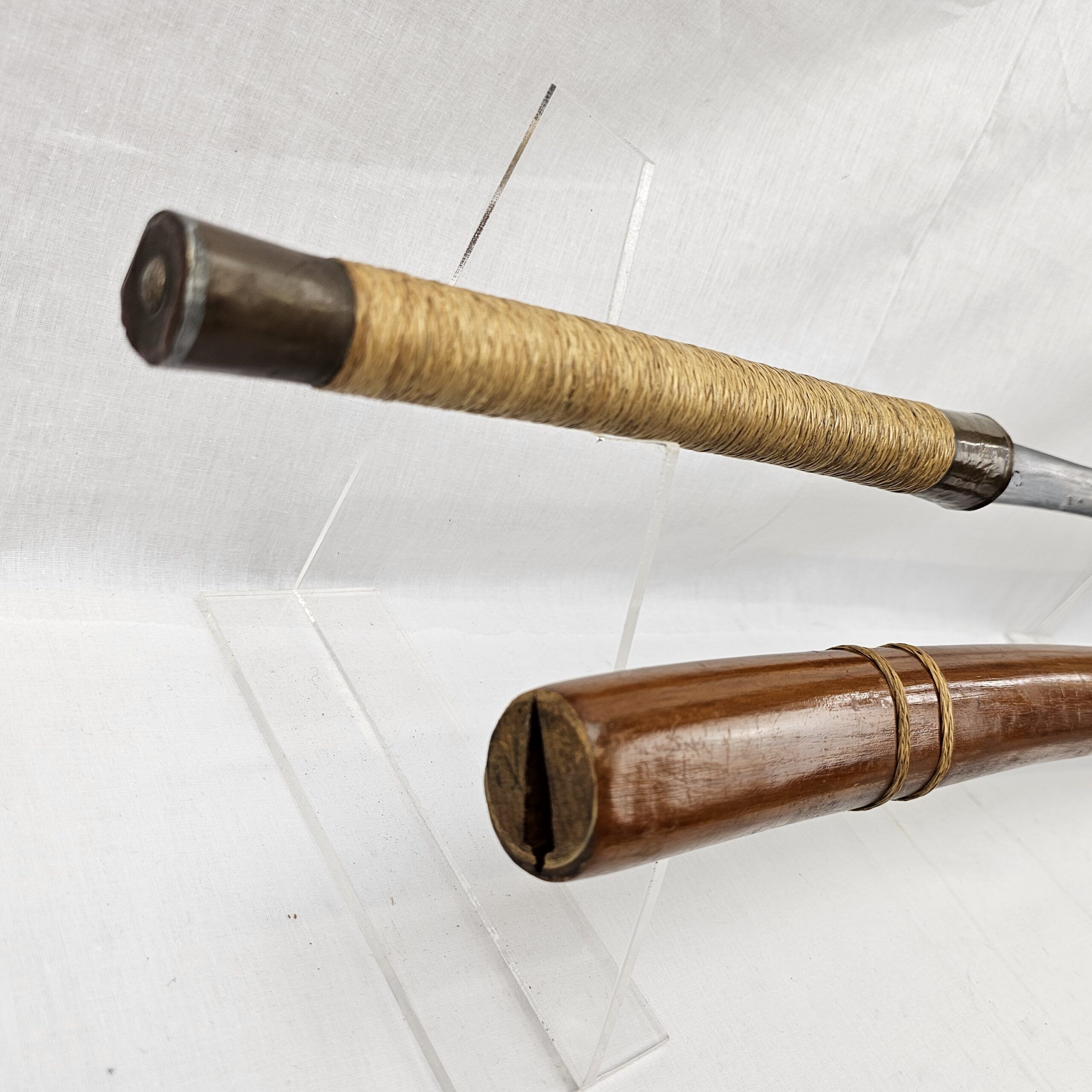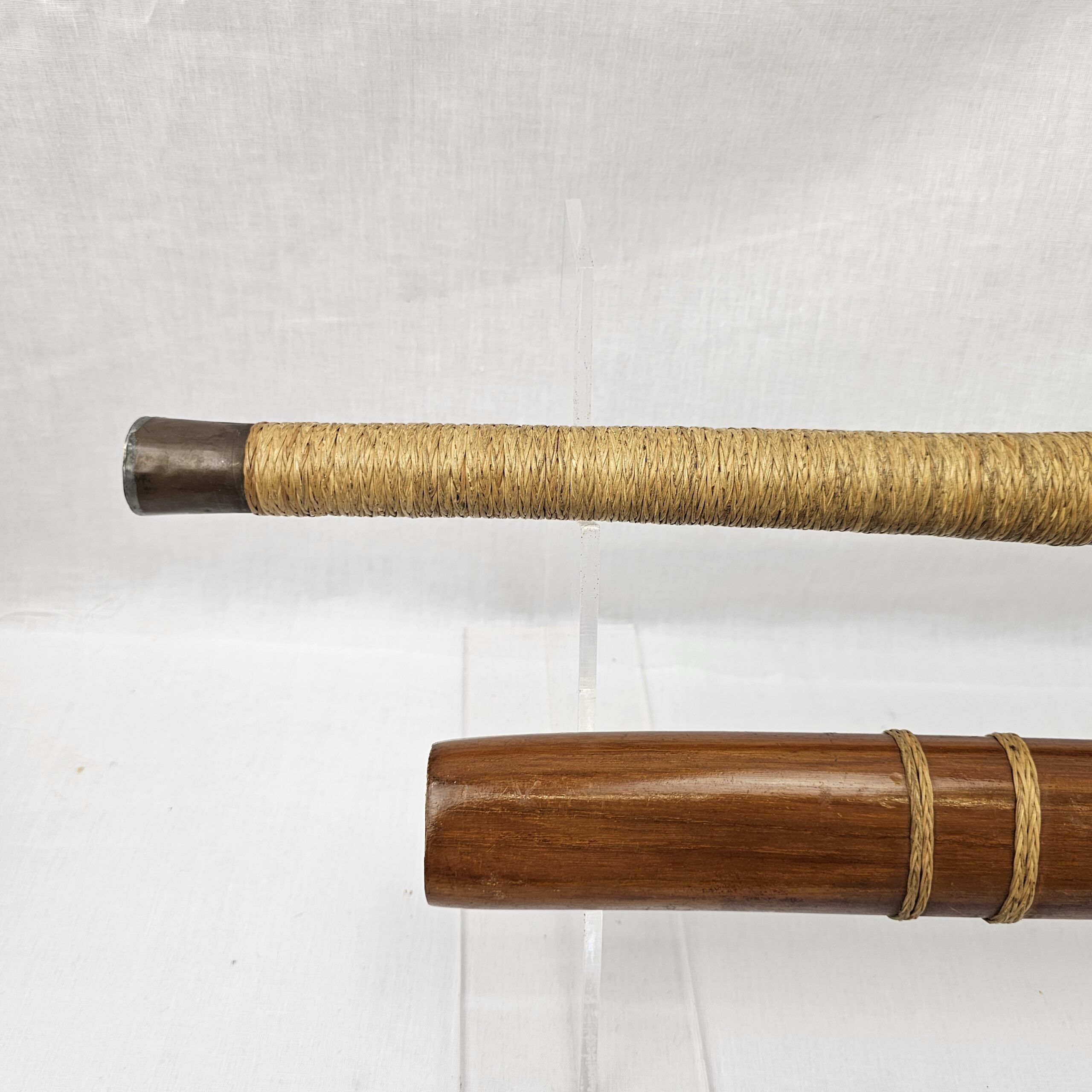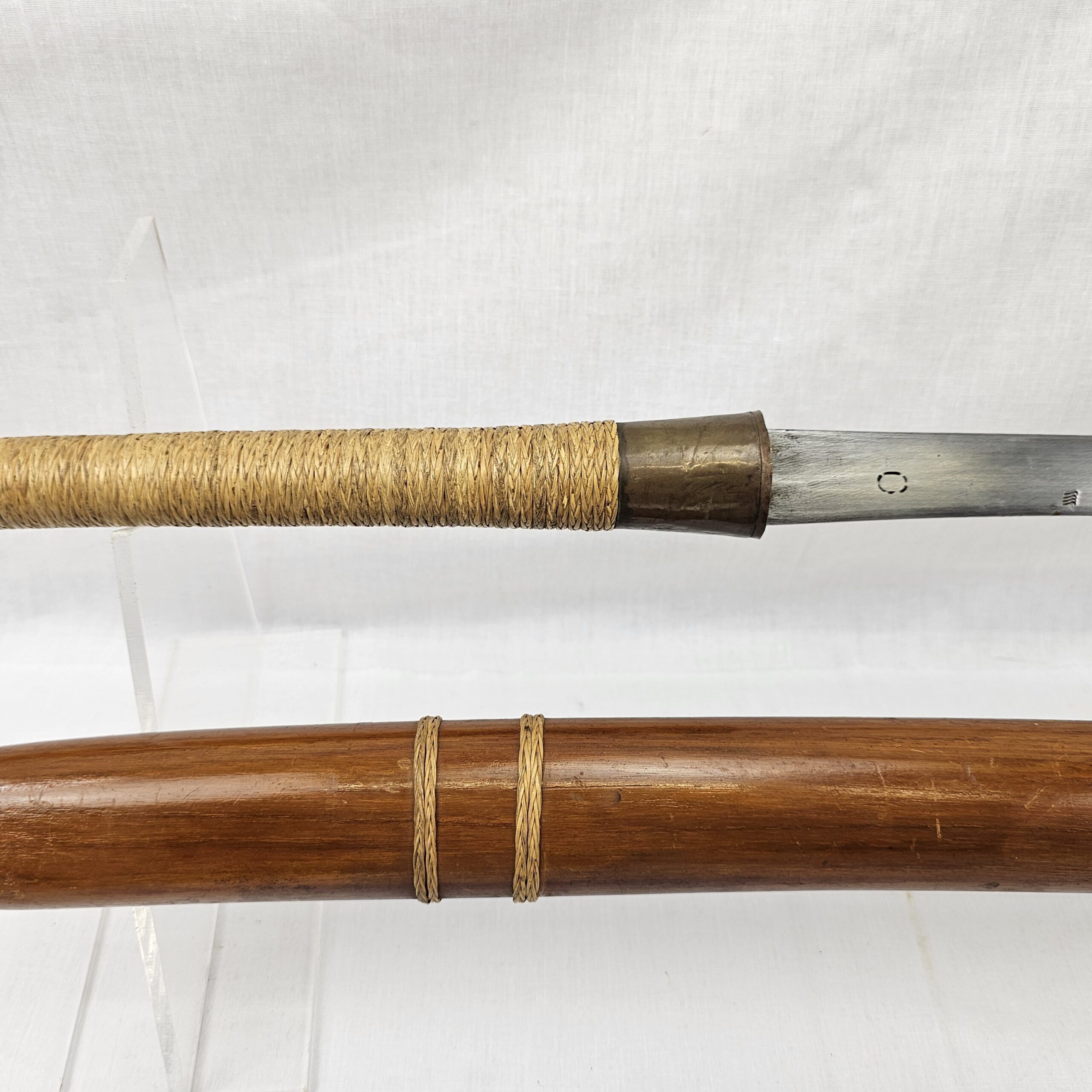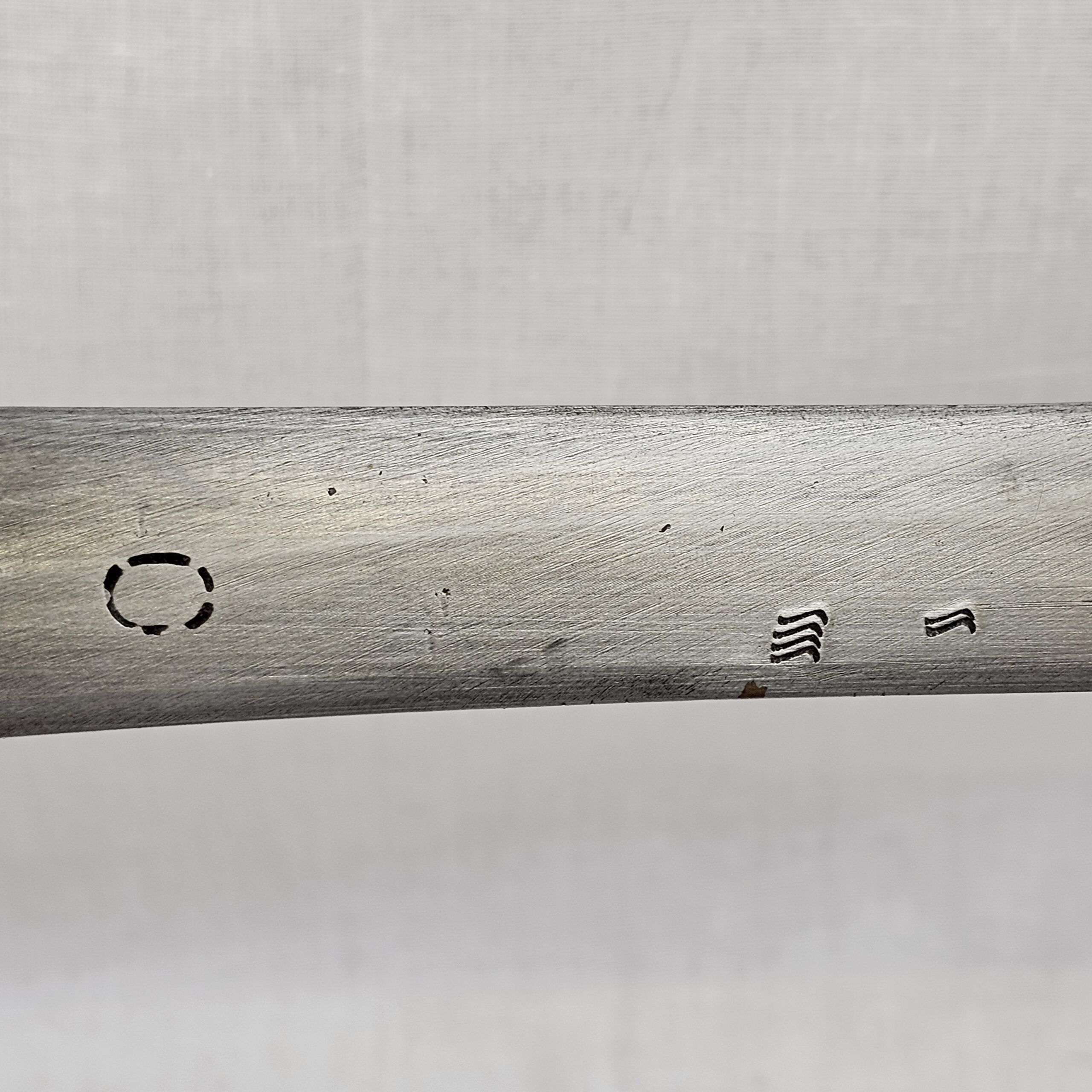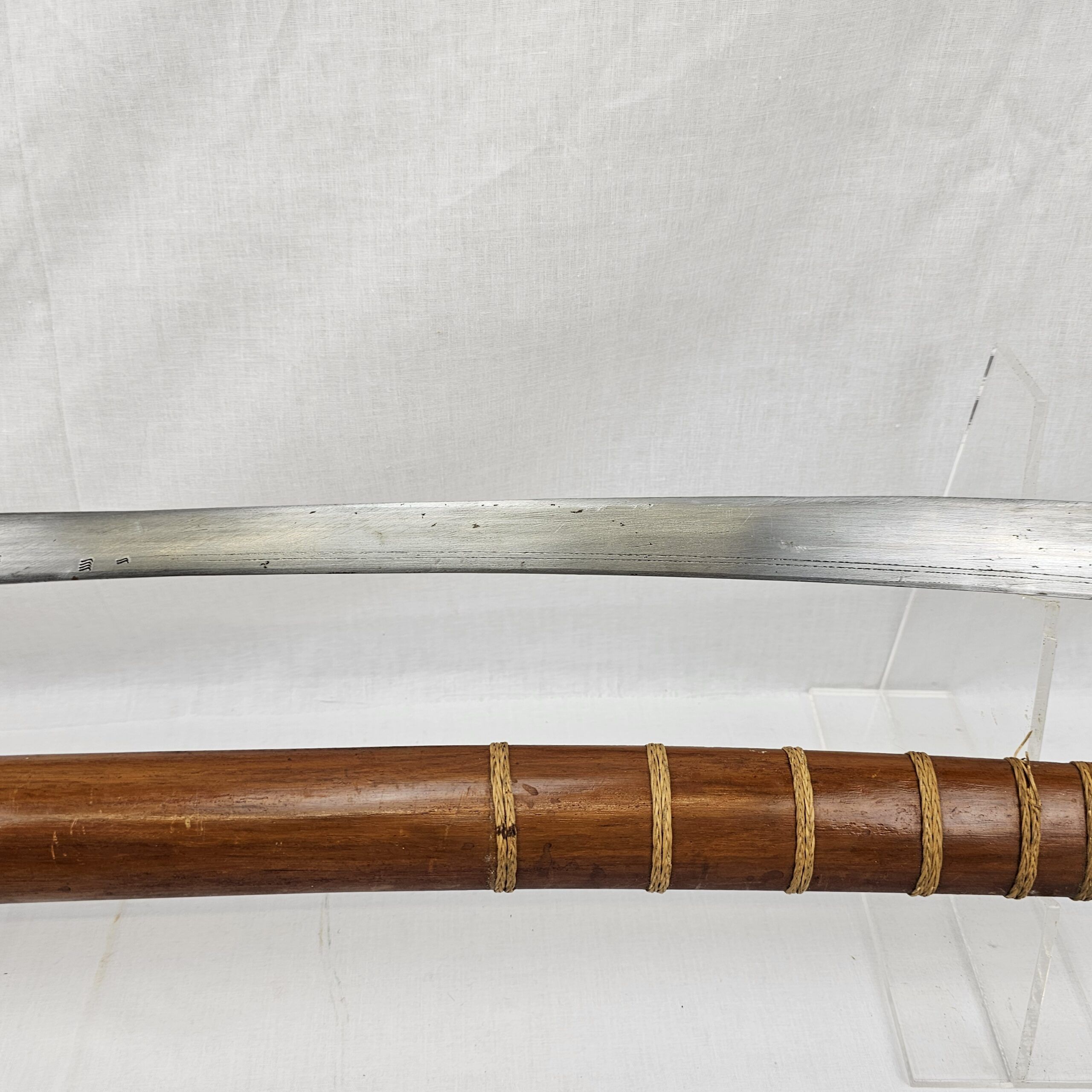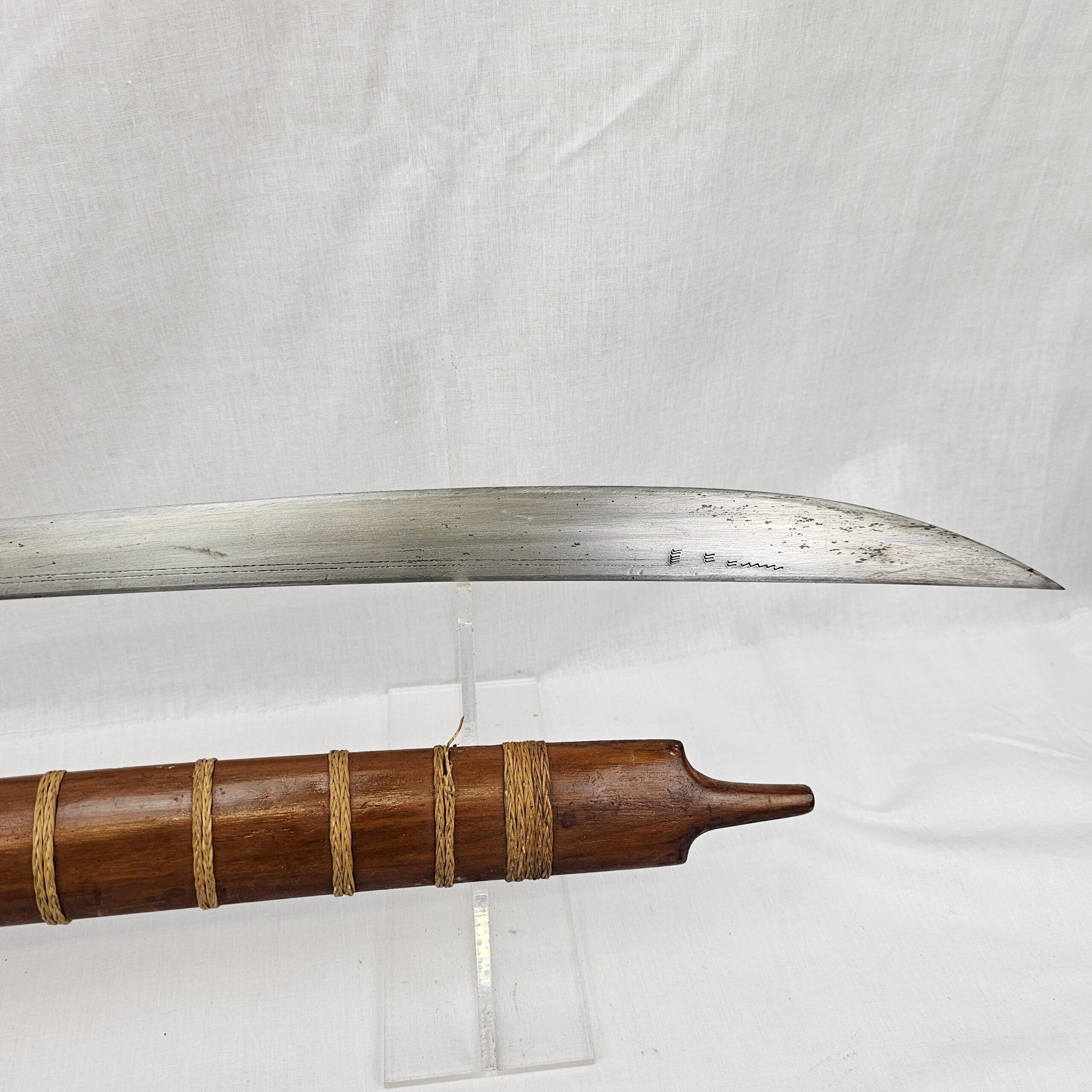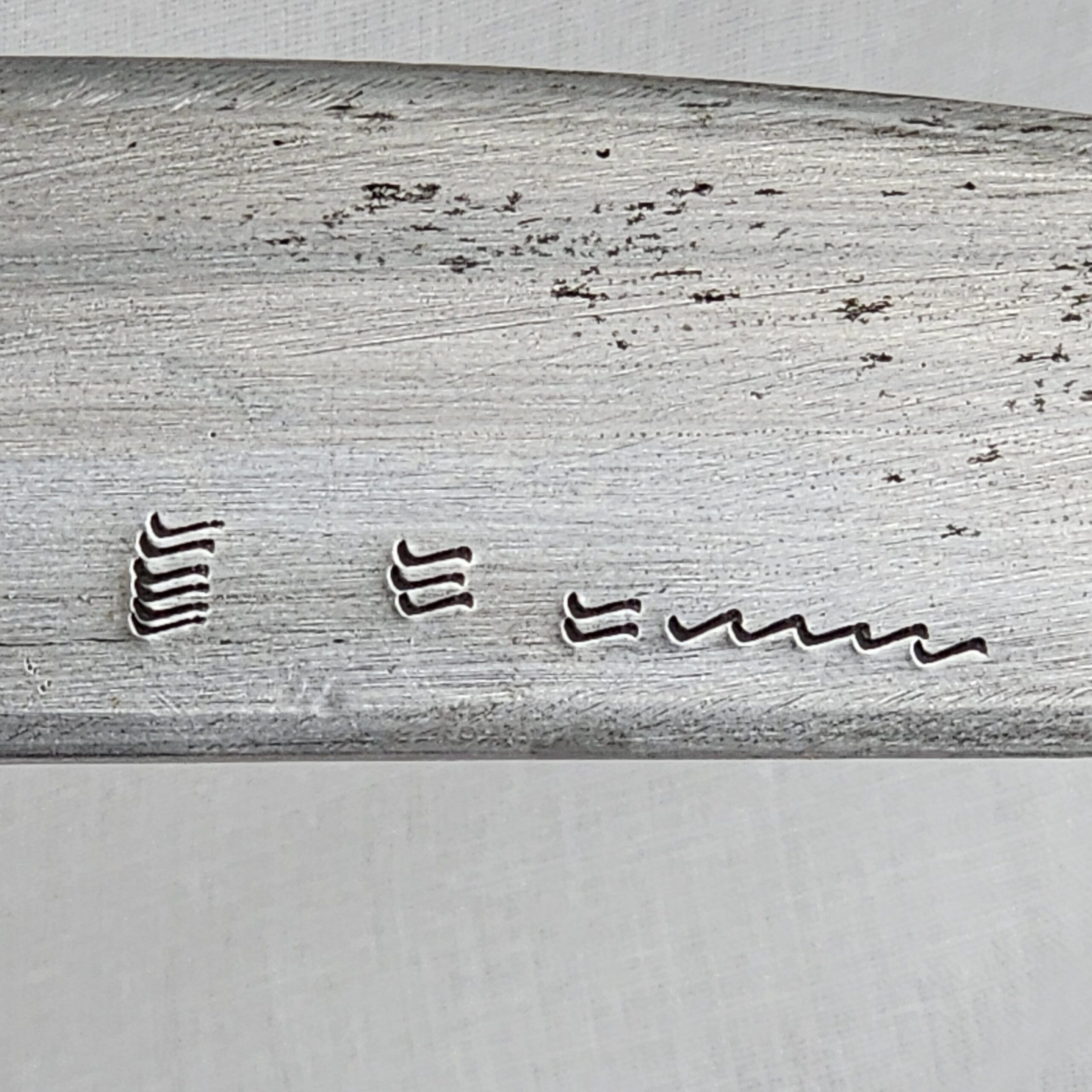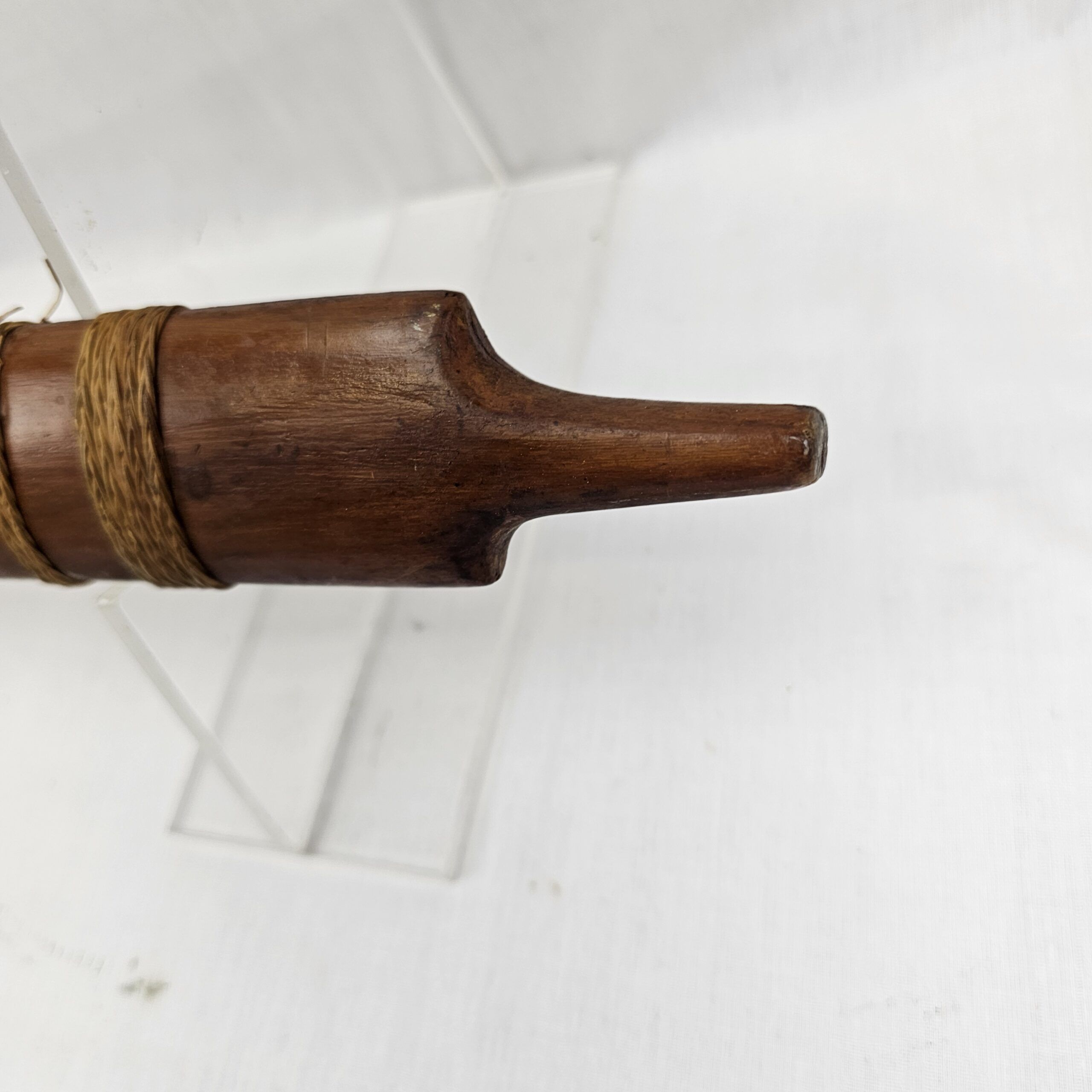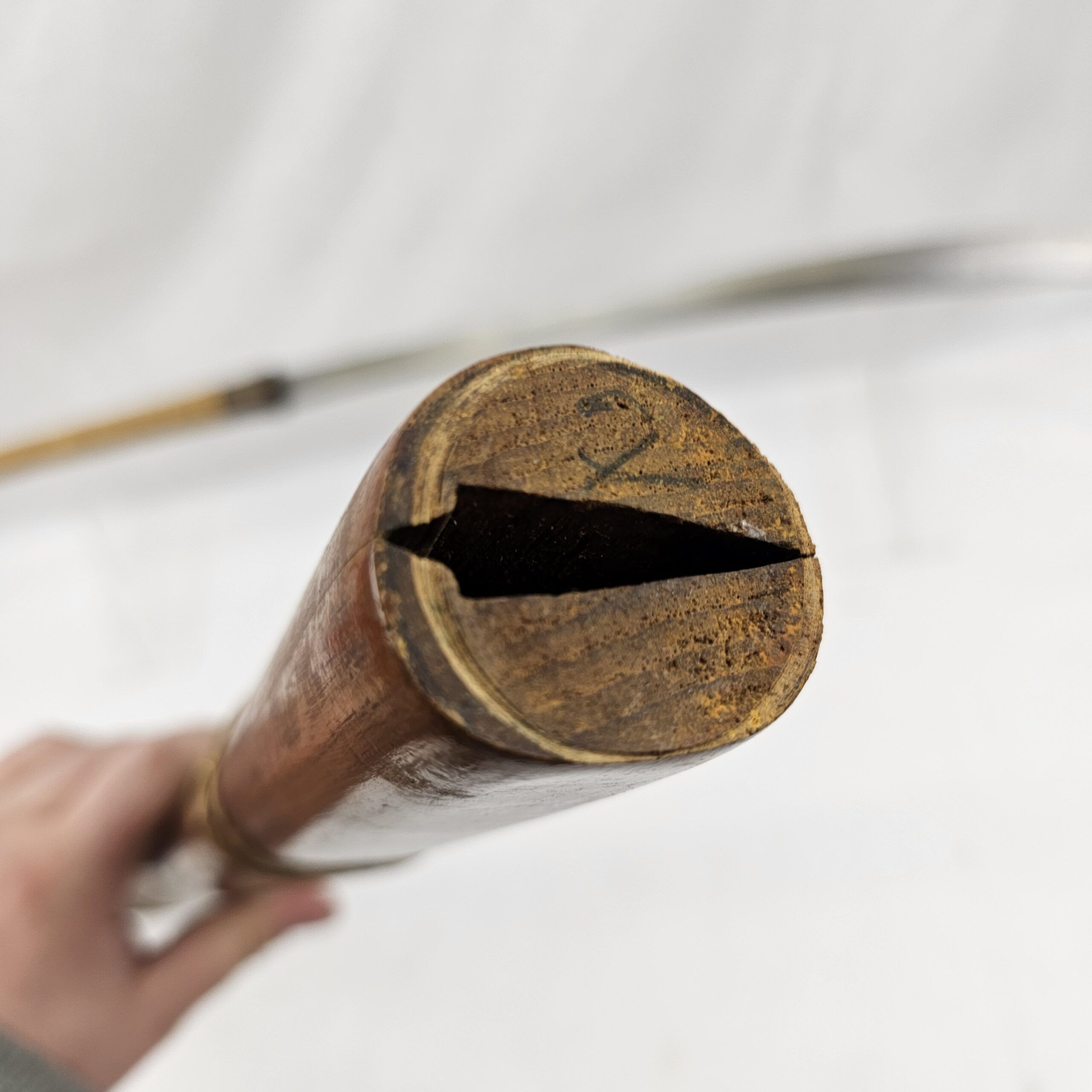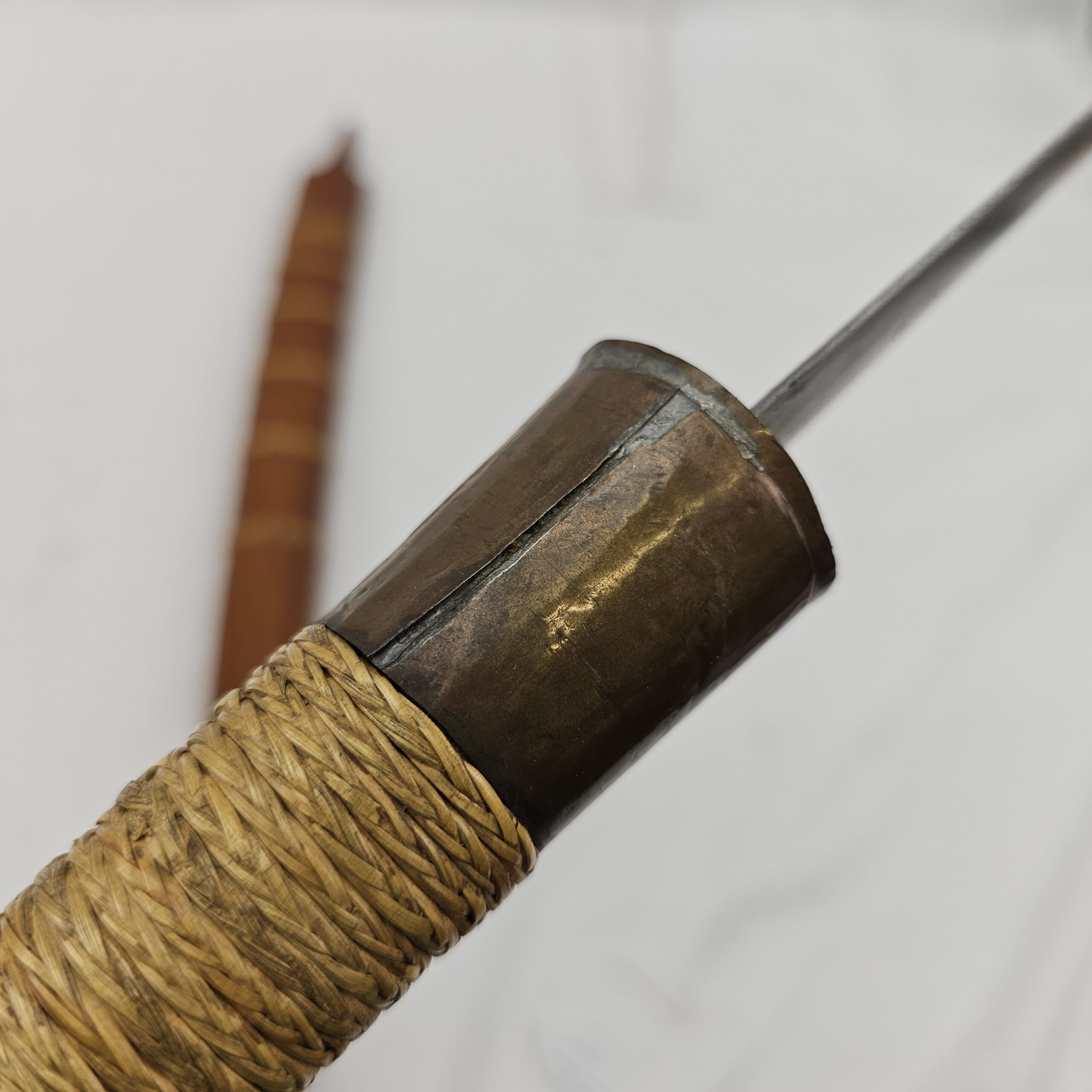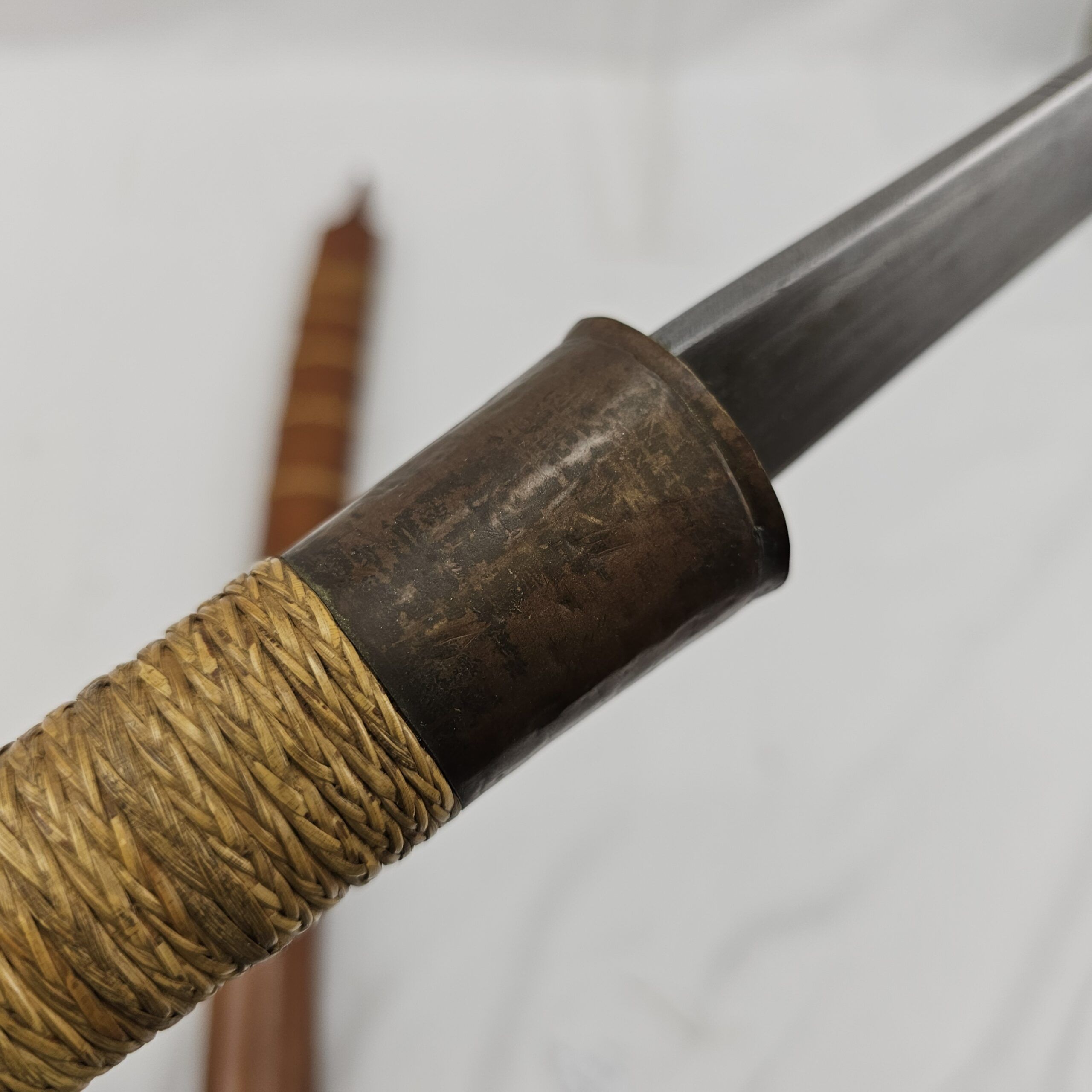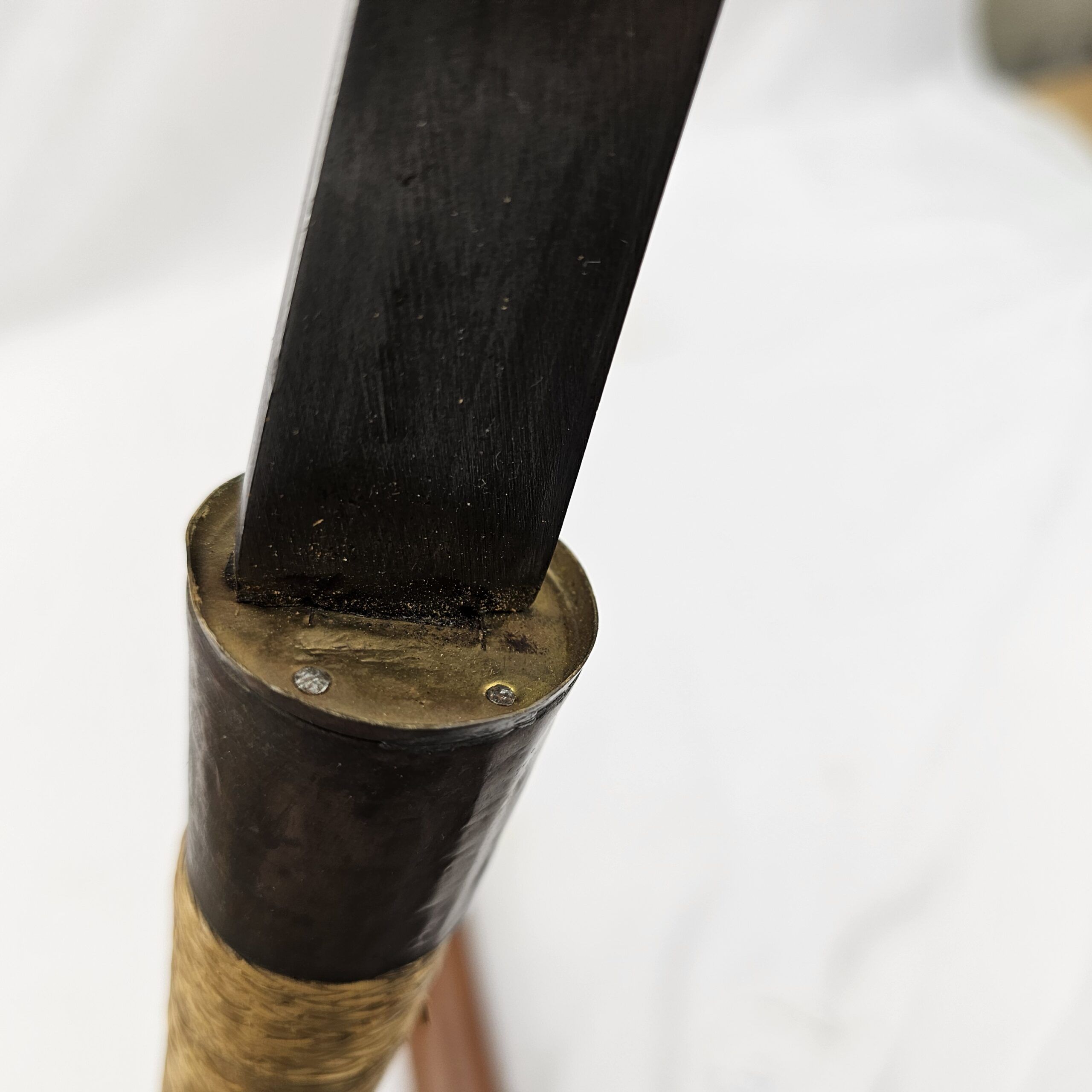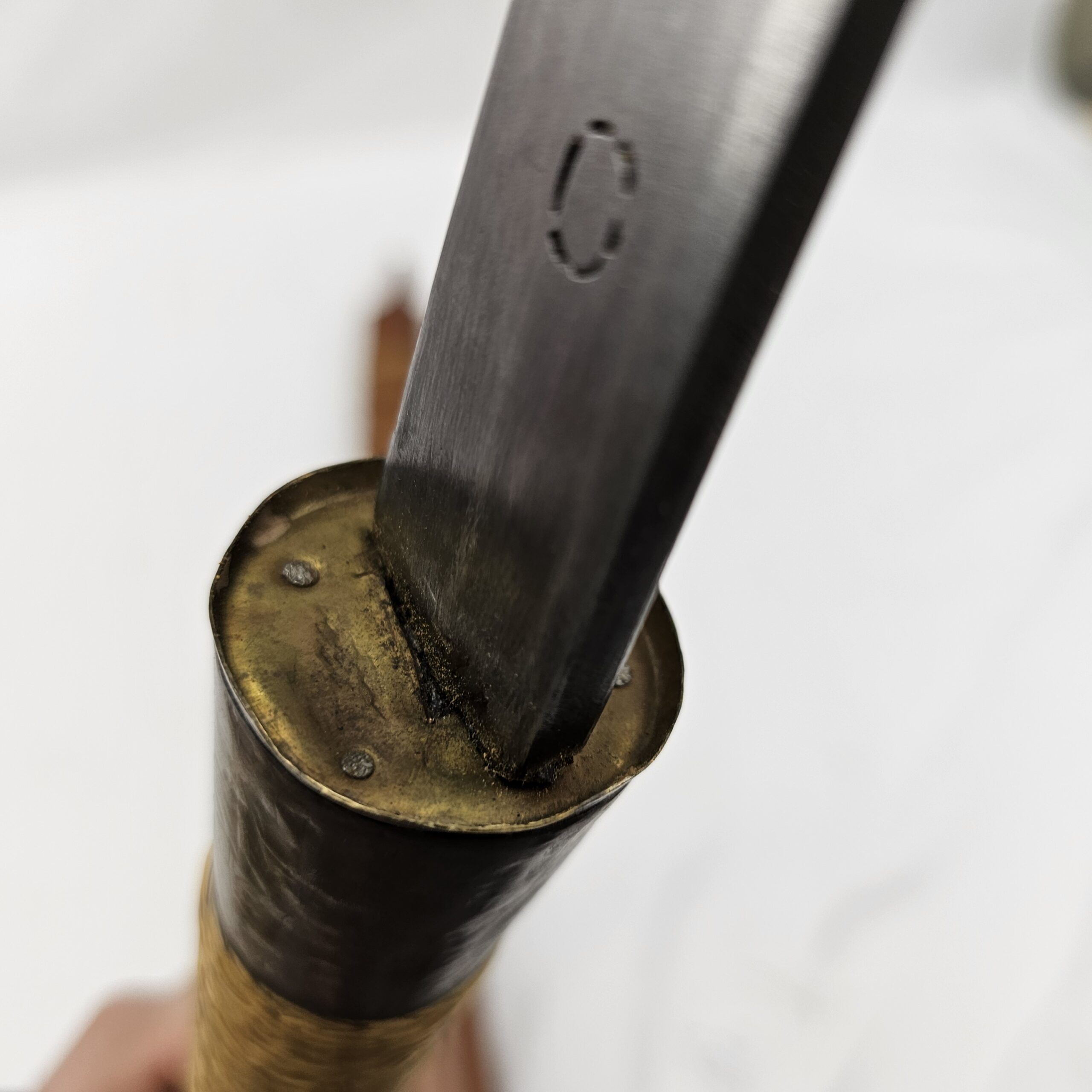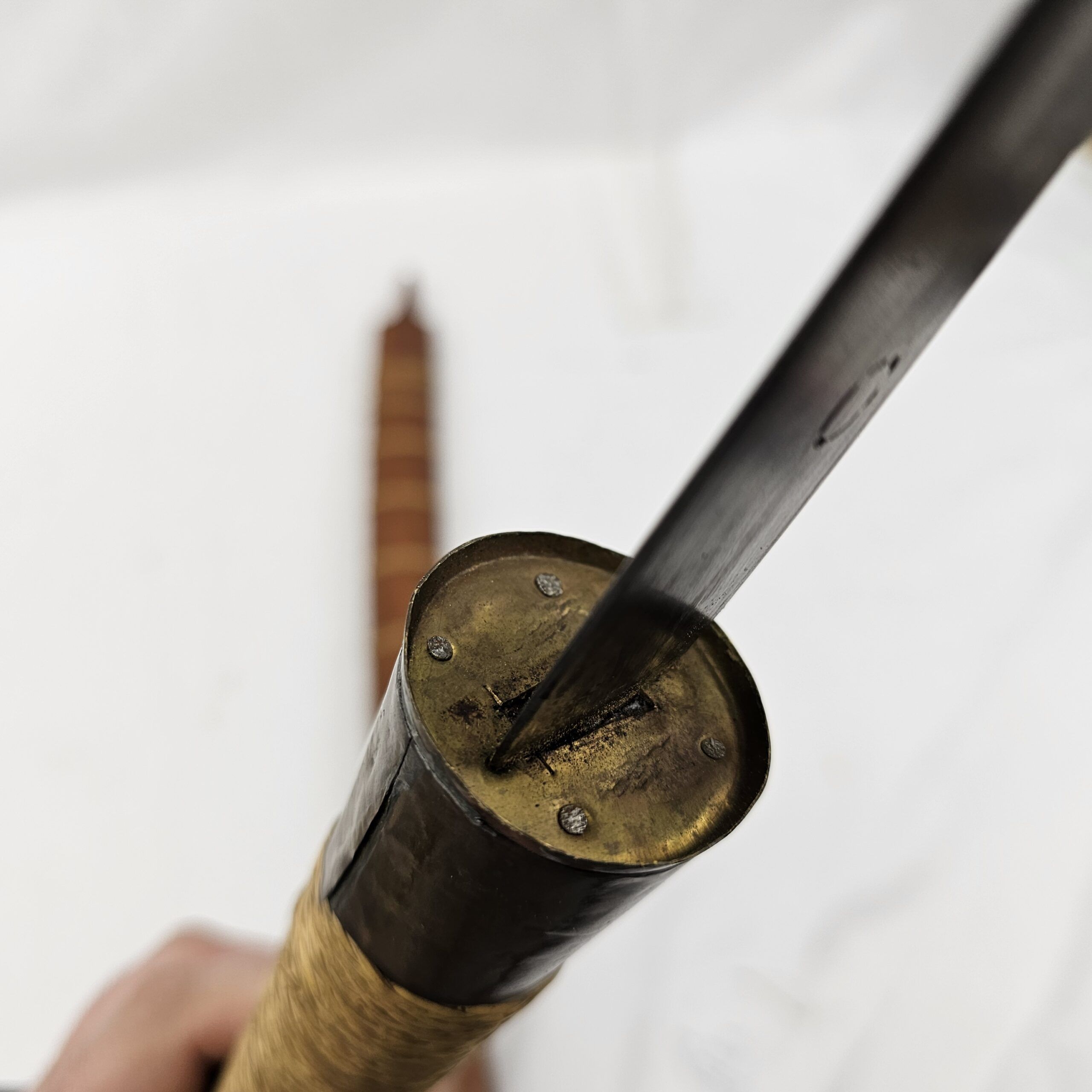~ Burmese Dha Sword and Scabbard ~
The Burmese dha, also known as the “dah” in some regions, is a traditional sword from Southeast Asia, particularly associated with Myanmar (formerly Burma) but also found throughout the surrounding regions including Thailand, Laos, and parts of Yunnan, China. The dha is characterized by its distinctive single-edged blade, which can vary in length and is often slightly curved, though straight variants also exist. This weapon has a rich history that intertwines with the cultural, military, and social fabric of the region.
Origins and Evolution
The origins of the dha are not precisely documented, but it is believed to have ancient roots, stretching back to the early cultures and civilizations of Southeast Asia. Over centuries, the dha evolved through influences from neighboring cultures and the requirements of local warfare and martial practices. Unlike the Japanese katana or the European sword, which were influenced by a relatively homogenous cultural context, the dha reflects a diverse set of influences due to the cultural diversity of Southeast Asia.
Usage and Significance
*Military Weapon: Historically, the dha was a primary weapon used by the warriors of the various kingdoms and states in the region. Its design was suited for both slashing and thrusting, making it versatile in battle. The sword was especially prominent in the numerous conflicts that characterized the region’s history, including the wars between the Burmese kingdoms and their neighbors.
*Symbol of Status and Power: Beyond its practical use as a weapon, the dha often served as a symbol of status, power, and bravery. Among certain groups, possessing a finely crafted dha was a sign of noble status or distinguished military service.
*Ceremonial Object: The dha also held ceremonial importance in some cultures, used in rites of passage, religious ceremonies, and royal events. The craftsmanship of the sword, including the blade and the often ornately decorated hilt, could be quite elaborate, reflecting its significance beyond the battlefield.
Craftsmanship and Styles
The craftsmanship involved in making a dha is highly respected, with traditional techniques passed down through generations. The blade’s construction typically involves forging steel, with some high-quality examples featuring pattern-welded steel for strength and beauty. The hilts and scabbards could be made from a variety of materials, including wood, ivory, or metals, and were often intricately decorated with carvings, inlays, and other embellishments.
There are numerous regional variations of the dha, reflecting the diverse cultures of Southeast Asia. These differences can be seen in the curvature of the blade, the design of the hilt, and the decorative motifs used. Some dhas are straight, while others have a pronounced curve, and the blade’s length can vary significantly, indicating the weapon’s adaptation to different combat styles and preferences across the region.
Contemporary Relevance
Today, the dha holds a place of cultural significance in Myanmar and the wider Southeast Asian region. While no longer used as a weapon of war, it remains a potent symbol of heritage and martial valor. The dha is celebrated in traditional dances, martial arts demonstrations, and ceremonial events, and it continues to be revered as a masterpiece of craftsmanship and a vital link to the historical and cultural identity of the region. Collectors and martial arts practitioners around the world also value the dha for its beauty, historical significance, and as a study in the diverse martial traditions of Southeast Asia.
~ Condition ~
Please see the pictures for the condition report


